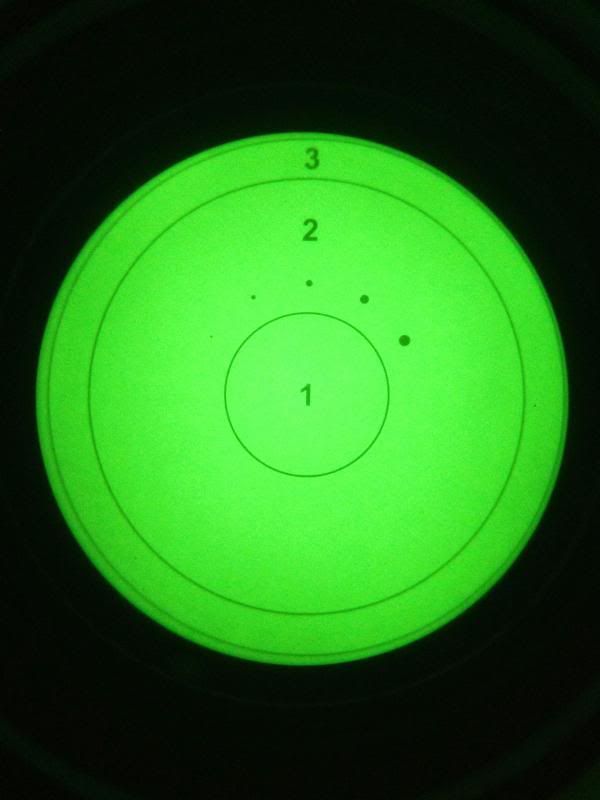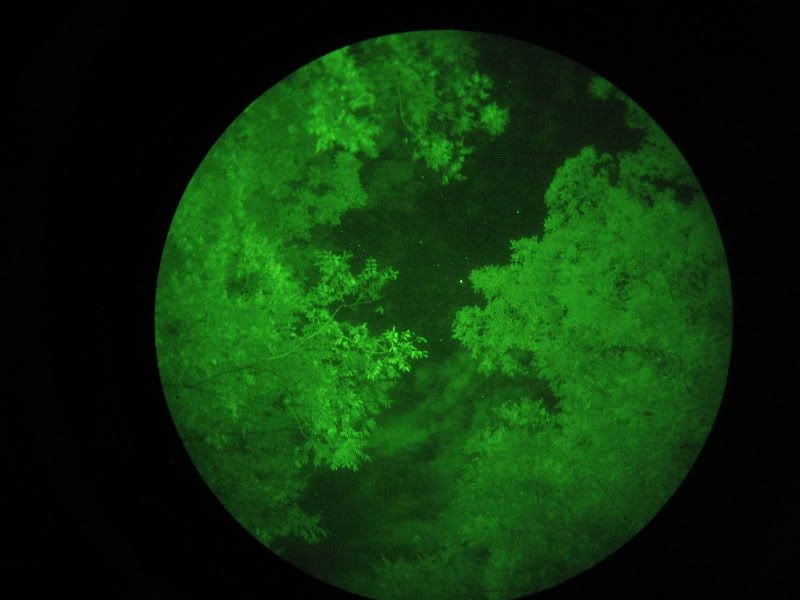OP could you try to take a couple more pictures through the tube showing a scene? I am curious if the specs show up that way? Also how are you taking the photo?
Lets talk about spots and specs. The Industry standard classifies a spot as anything .003 inches or larger, as measured on a standard ITT spot chart. We have been using this chart for years and it has allowed us to accurately grade what we are supplying to our customers. Here is a photo of said SPOT chart. This is a view through a PVS-14 set up on a tripod and viewing the chart from the specified distance.
The spot gauge in the image shows a series of spots in an arc over the top of the circle of Zone 1. The left most "spot" starts at .003 and goes .006, .009, .012, .015. What you do is move the spot in the tube to the chart and see just how large it REALLY is. Also what zone its REALLY in.
Anything in the image smaller than .003 is considered a pepper speck and generally, will barely (usually not at all) show in a photograph. The cause of these "pepper specks" is mostly the ends of the fiber optic strands that are not cut perfectly square as the fiber bundles were being made. The do not affect function and are only noticeable if you really look for them. They are however, just like in diamonds a noticeable artifact. If they bother you or not is a personal preference but you will look for a very long time for at tube completely free of them. It has been my experience though that if your doing anything "dynamic" i.e. out using your night vision, you wont see them.
To the OP from the one picture posted, it looks like you have a VERY nice tube.
This is an L3 Omni 8 tube that has one Pepper speck in it.

Even the Olivia Munn tube wasnt perfectly free of pepper specks but you can't see a one of them here.
